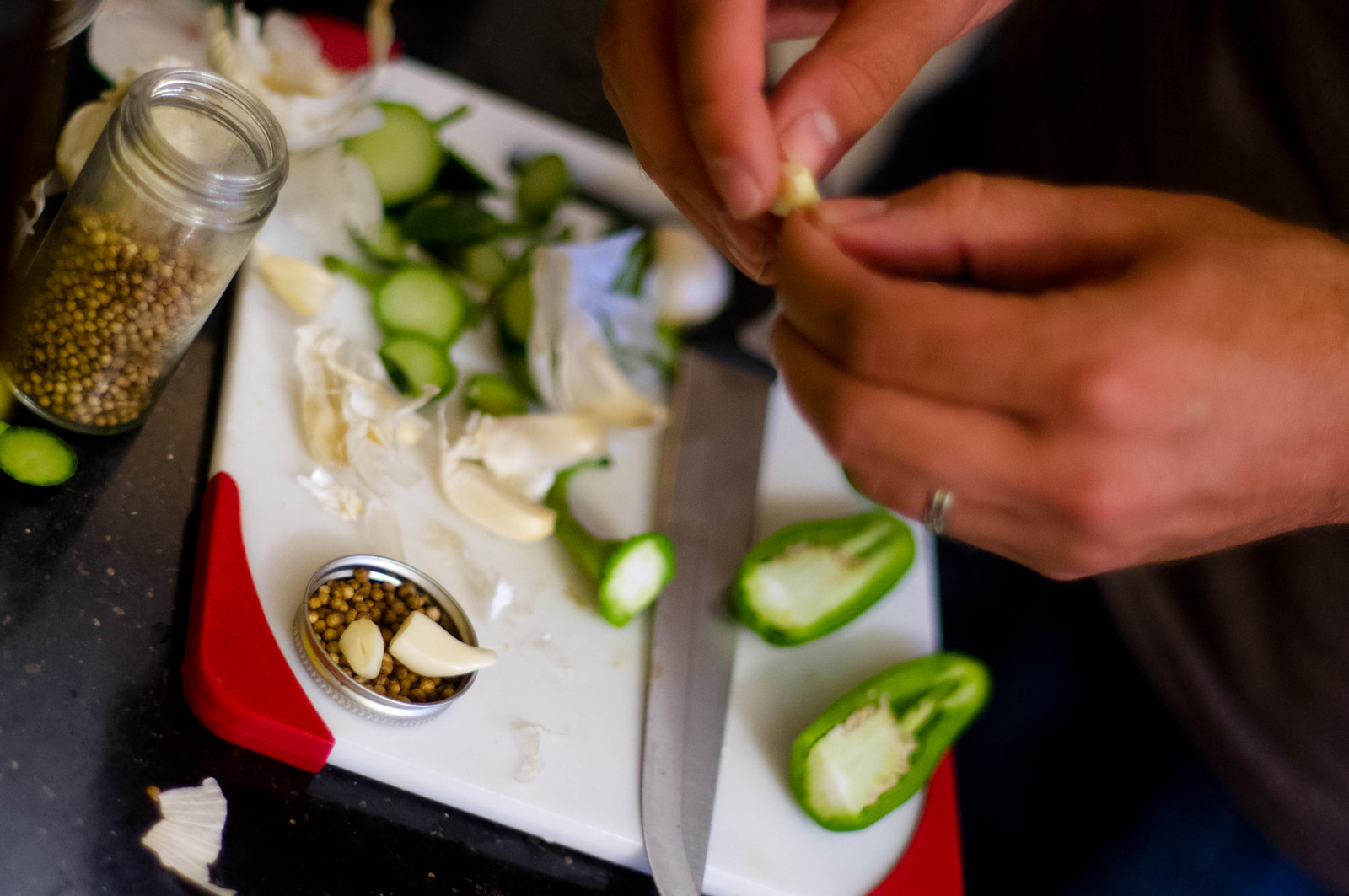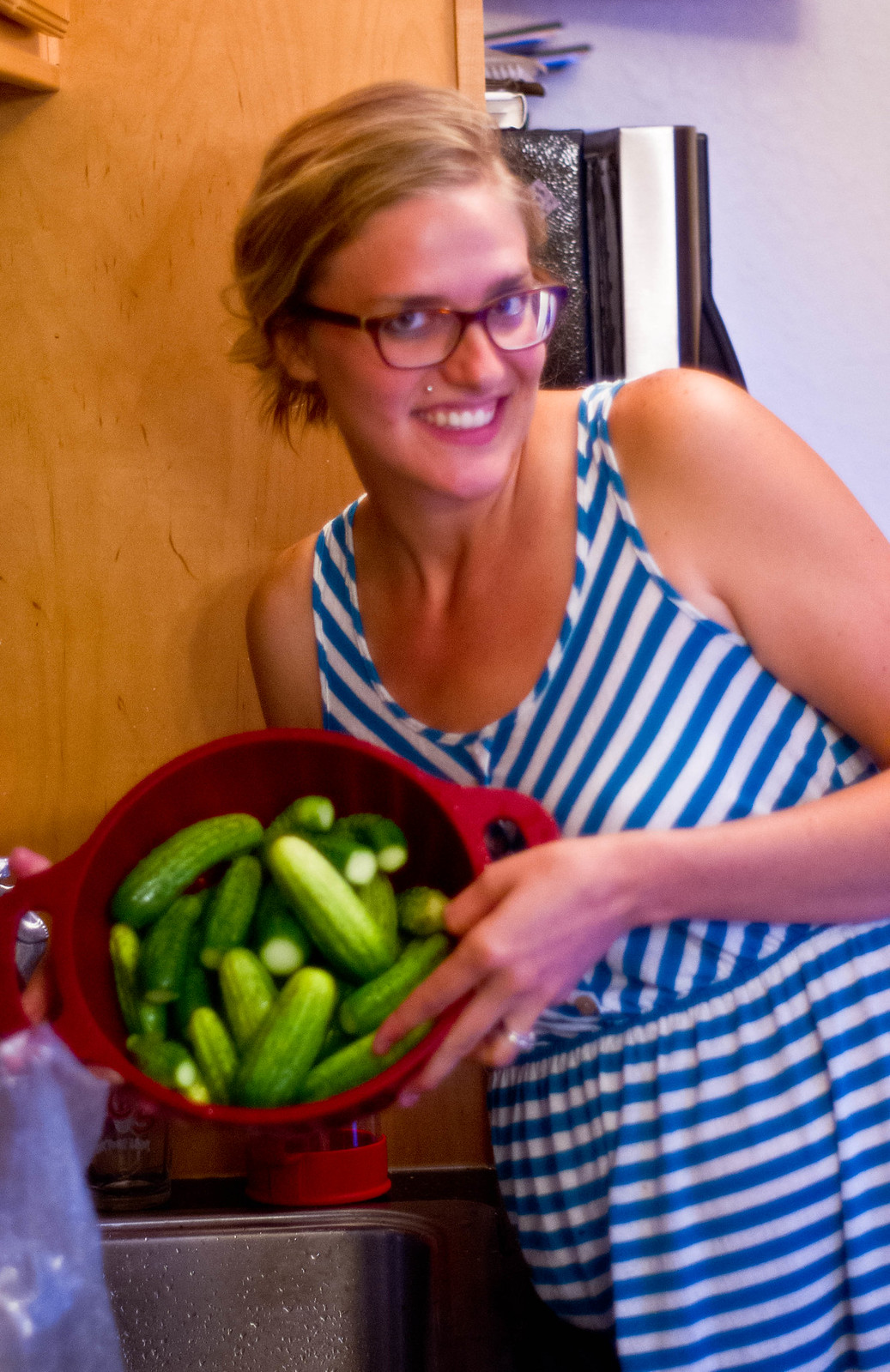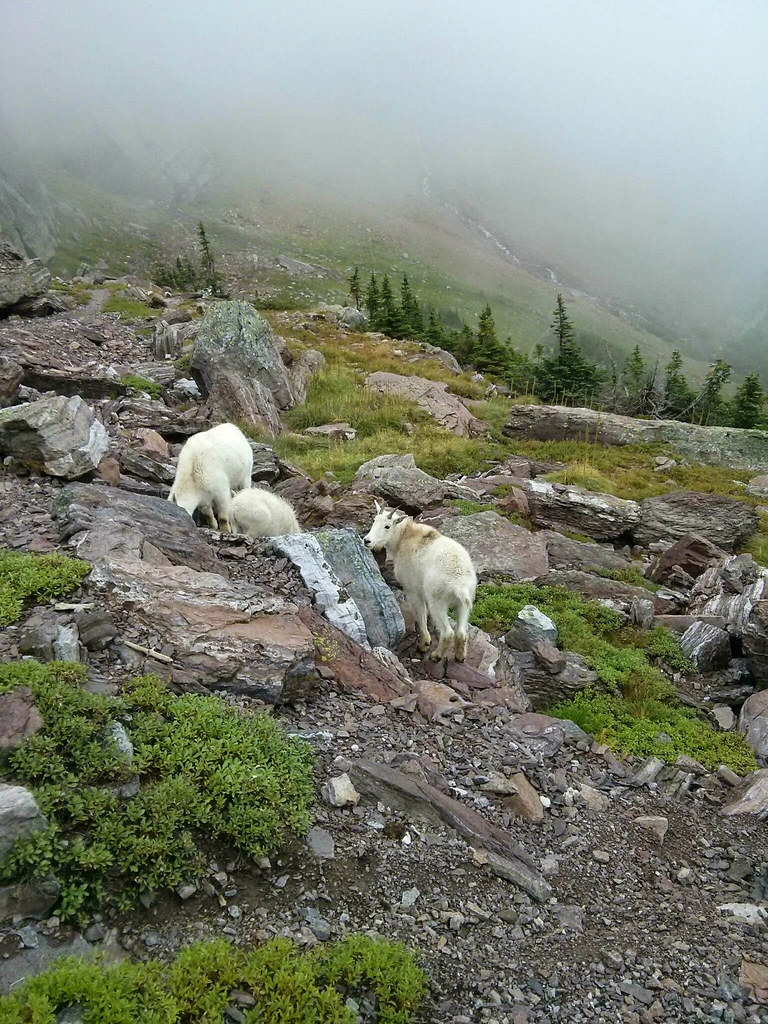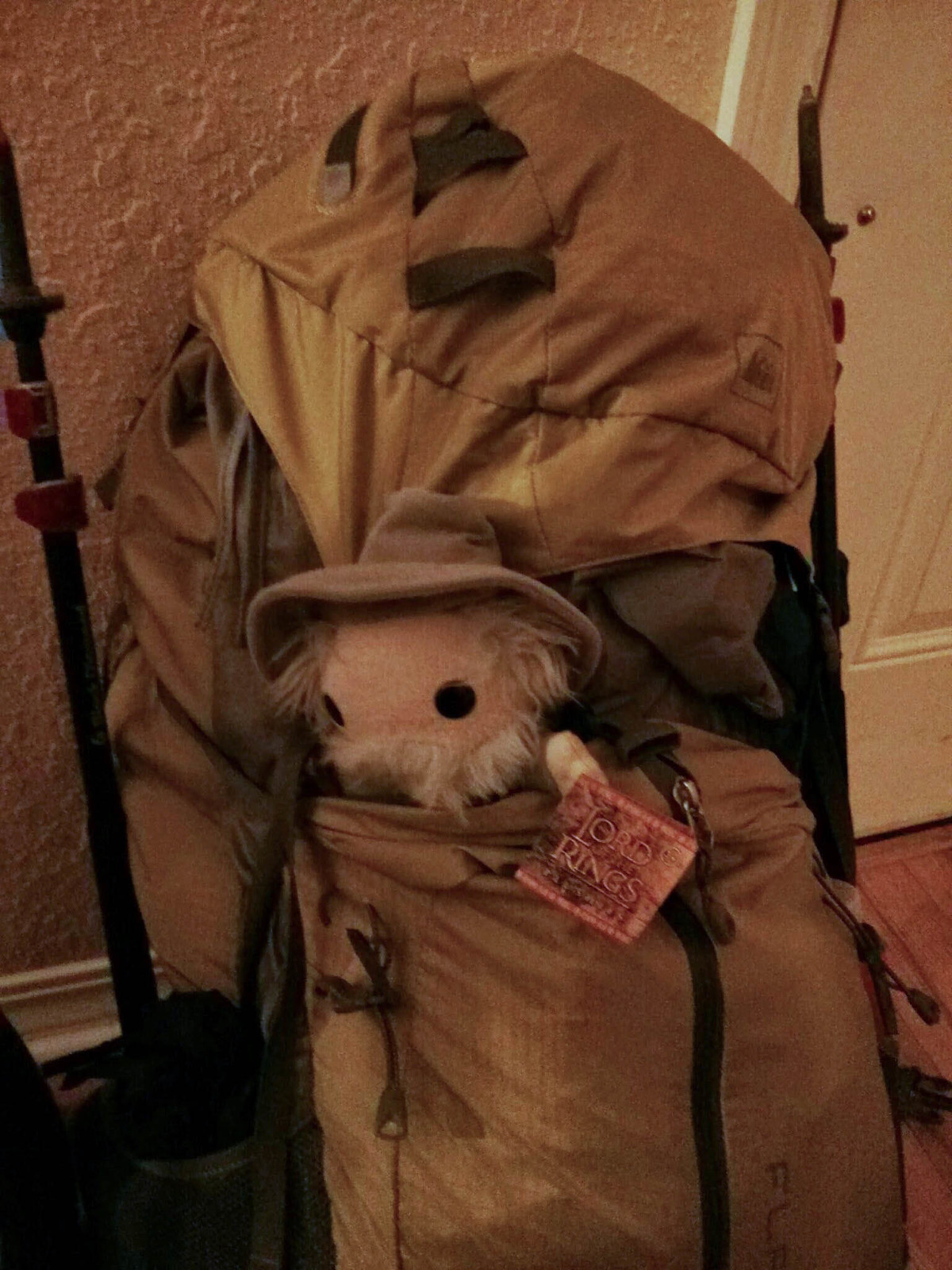One of our summer pastimes is to go to Krugers Berry Farm on nearby Sauvie Island. We eat most of the berries, but take some and make excellent jalapeño blackberry jam which is great for sandwiches. While there, we also pick up some pickling cucumbers.
Making pickles is one of my favorite activities in the late summer, second only to eating pickles. We can easily eat a half-gallon jar a week.
 Not only are the cucumbers delicious, but most anything else you add to the pickles also becomes super tasty. I’ve made pickles, both by canning them in a boiling water bath, and open fermenting. Open fermenting is a great way to get started if you’re not doing a large batch, and don’t plan on storing them long term. If you’re wanting to make a bunch for long term storage you’ll want to make sure you follow steps to make sure your cans are sealed properly. I’ll only cover the open/wild fermentation pickles(also sometimes called refrigerator pickles) here.
Not only are the cucumbers delicious, but most anything else you add to the pickles also becomes super tasty. I’ve made pickles, both by canning them in a boiling water bath, and open fermenting. Open fermenting is a great way to get started if you’re not doing a large batch, and don’t plan on storing them long term. If you’re wanting to make a bunch for long term storage you’ll want to make sure you follow steps to make sure your cans are sealed properly. I’ll only cover the open/wild fermentation pickles(also sometimes called refrigerator pickles) here.
Brine Recipe
- 4 parts boiling water
- 1 part white vinegar
- 2 tablespoons of pickling salt per 5 cups of liquid
Additions – Add to taste
- Garlic
- Heads of dill
- Coriander
- Peppercorns
- Jalapenos or other peppers
- Experiment with other spice mixtures
To prepare your cucumbers, you will want to wash them throughly, and cut off the flowering end. A good hint from the Grow Organic blog is “Find the blossom end by looking for the rough dot (instead of the smooth, indented dot) at the end of the cuke.” The flowing end contains an enzyme that will release over time making your pickles soft. By cutting this off you’re keeping your pickles crunchy longer. Another tip I’ve done to get crunchy pickles is to add grape leaves to the process.
Once you have prepared your cucumbers, place them in a container. For our situation I used beer fermenters I had. If you do use plastic buckets make sure they are food grade plastic. Buckets are easy because you can set them on the floor out of the way. I’ve also used are large pyrex bowels to good success. Once you’ve added the cucumbers you’ll add in what ever additions you’re looking for. My favorite thing about making home made pickles is the cool chance to experiment. Once you get the hang of regular cucumbers, you are open to a world of other things to pickle – onions, corn, asparagus(another favorite of mine), green beans etc. After you’ve added everything, you will need to add enough brine to completely cover the everything in your container. You will notice that most of your goods start to float when added to liquid. Since anything that is exposed to air will mold, you want to keep everything submerged under the brine. The way I accomplish this is by placing a plate or bowl in the vessel to push down the elements. This will depend on your fermentation vessel of course.
Then you just need to let sit 1-2 weeks, or until they’re as pickled as you like. Then you will want to add them to a jar or other storage vessel and store them in the fridge.
If you find yourself catching the fermentation bug, there are a load of other things you can make. I’ll try and post an entry soon on making Kombucha, another good fermentable.







